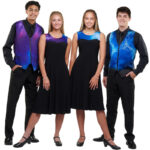Nike’s unveiling of the track and field uniforms for Team USA athletes at the upcoming 2024 Paris Olympics has sparked a significant debate. The controversy centers around the design of the women’s uniform, specifically a French-cut leotard silhouette, which some critics are labeling as sexist and impractical for performance. This has ignited discussions across social media platforms, raising questions about the balance between aesthetics, functionality, and respect in women’s athletic wear.
Design Details of the Uniform
The newly released us women’s track uniform for the Paris Olympics retains the traditional red, white, and blue color scheme of Team USA. Similar to the kits worn at the Tokyo Olympics in 2021, the 2024 designs incorporate blue and white stripes on a red base. However, the focal point of the controversy is the silhouette of the women’s uniform. Track and field publication Citius Mag first brought attention to the design by posting photos showcasing both the men’s and women’s kits. The women’s uniform prominently features a high-cut leotard design, described as French-cut, which has led to concerns regarding coverage and comfort during athletic performance.
Athlete Reactions and Backlash
The unveiling of the us women’s track uniform design was met with immediate reactions from athletes, many expressing concern and criticism. American long jumper Tara Davis-Woodhall, a Tokyo Games veteran, voiced her apprehension on Instagram, stating, “Wait my hoo haa is gonna be out.” This comment quickly captured the sentiment of many who felt the design was overly revealing. U.S. hurdler and 2008 Olympian Queen Harrison Claye sarcastically tagged European Wax Center, a waxing service, in a comment, asking if they would sponsor Team USA, highlighting the perceived impracticality of the uniform’s cut. Paralympic runner Jaleen Roberts further emphasized the issue of exposure, commenting, “This mannequin is standing still and everything’s showing… imagine MID FLIGHT.”
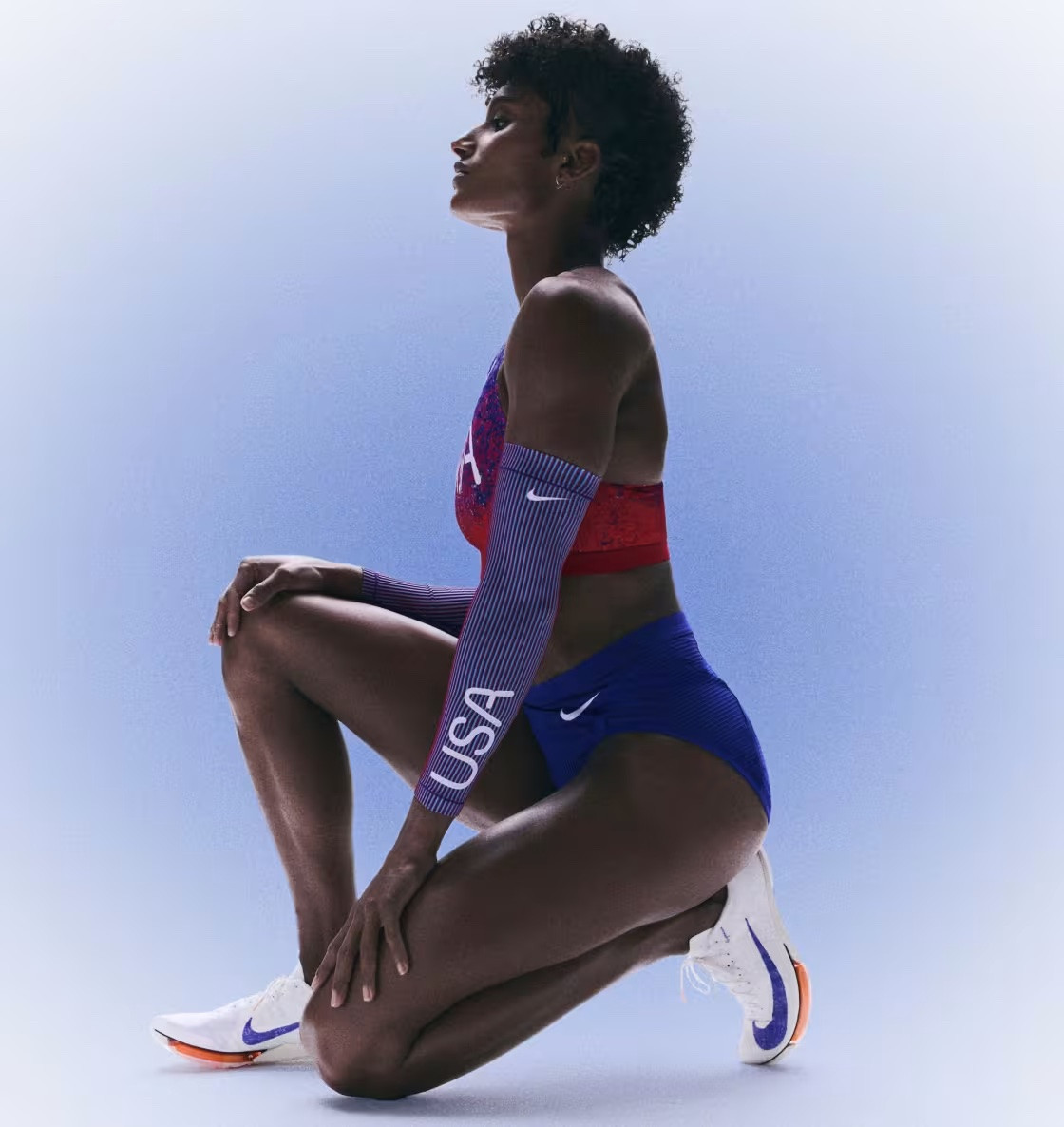 Team USA athlete modeling the Nike Paris 2024 women's track and field uniform, highlighting the design controversy.
Team USA athlete modeling the Nike Paris 2024 women's track and field uniform, highlighting the design controversy.
Steeplechaser Colleen Quigley, a Team USA Olympic hopeful for 2024, in an interview with Reuters, directly criticized the unitard, stating it is “absolutely not made for performance.” Lauren Fleshman, a retired track star and coach with multiple national championships, took to Instagram to describe the revealing uniform as “a costume born of patriarchal forces that are no longer welcome or needed to get eyes on women’s sports.” She further urged, “Stop making it harder for half the population.”
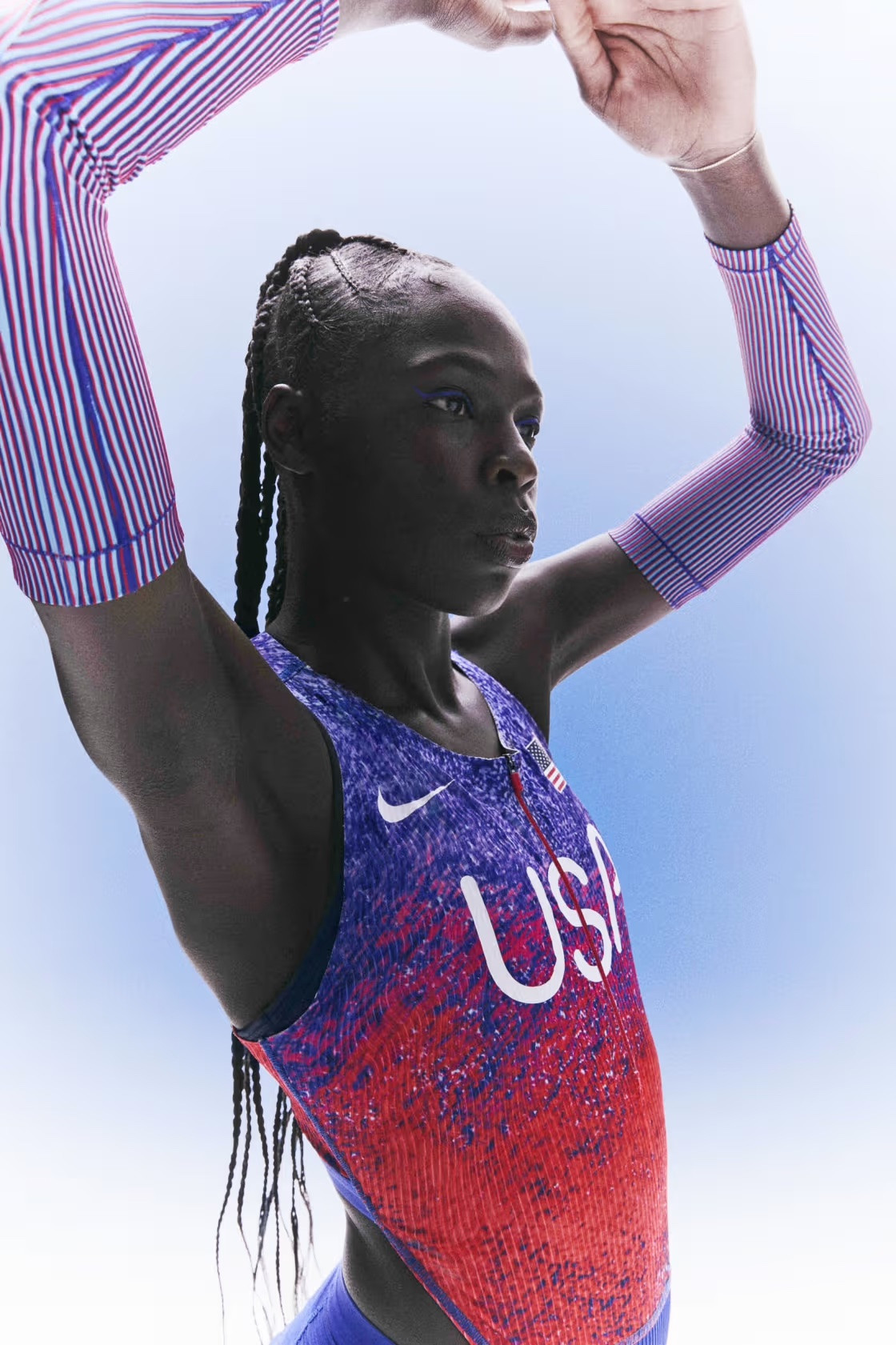 Team USA athlete showcasing the Nike Paris 2024 women's track uniform, sparking debate on design functionality and sexism.
Team USA athlete showcasing the Nike Paris 2024 women's track uniform, sparking debate on design functionality and sexism.
However, not all athlete responses were critical. Pole vaulter Katie Moon, an Olympic gold medalist sponsored by Nike, defended the brand. She clarified that Team USA athletes have a wide range of uniform options, stating, “We have at least 20 different combinations of a uniform to compete in with all the tops and bottoms available to us. We DO have the men’s option available to us if we want it.” Moon argued that criticizing the “buns and crop top” as sexist undermines the autonomy of female athletes to choose what they feel comfortable and perform best in. She emphasized that if it were the only option, the sexism critique would be valid, but athletes have choices.
Nike and USATF Response
In response to the growing controversy, Nike issued a statement to ABC News, clarifying that the unitard is “one of a range of styles” available to athletes. The brand also mentioned that “tailoring options” would be provided for Olympic and Paralympic athletes at the Games. Similarly, USA Track & Field (USATF) released a statement to ABC News, stating that the presented outfits are “only two of many options, including 50 unique pieces,” athletes can select from for the Olympics. USATF further added, “Athlete options and choices were the driving force for USATF in the planning process with Nike,” and that Nike consulted with athletes during the design process to ensure comfort and suitability for various events.
 Anna Cockrell at the Nike Air Innovation Summit in Paris, wearing Team USA track and field apparel, amidst uniform controversy.
Anna Cockrell at the Nike Air Innovation Summit in Paris, wearing Team USA track and field apparel, amidst uniform controversy.
These statements aim to reassure athletes and the public that the controversial leotard is not the sole option, and that athlete feedback and choice were considered in the uniform design process. The availability of multiple pieces and tailoring services suggests an attempt to accommodate diverse preferences and performance needs within the us women’s track uniform offerings.
Broader Context and Athlete Choice
The debate surrounding the us women’s track uniform highlights ongoing discussions about sexism and objectification in women’s sports apparel. While some view revealing designs as empowering and a matter of personal choice, others argue that such designs can prioritize aesthetics over functionality and potentially contribute to the sexualization of female athletes. The crucial aspect, as emphasized by Katie Moon and the statements from Nike and USATF, is the provision of choice. Offering a variety of styles, including more modest and traditional options alongside the French-cut leotard, empowers athletes to select uniforms that align with their comfort levels and performance requirements.
Ultimately, the effectiveness of the us women’s track uniform for the Paris Olympics will be determined by the athletes’ experiences during the Games. The controversy serves as a reminder of the importance of ongoing dialogue between sportswear brands, athletes, and the public to ensure that women’s athletic wear is both functional and respectful, reflecting the diverse needs and preferences of female athletes.
View Gallery of Nike Olympic Uniforms
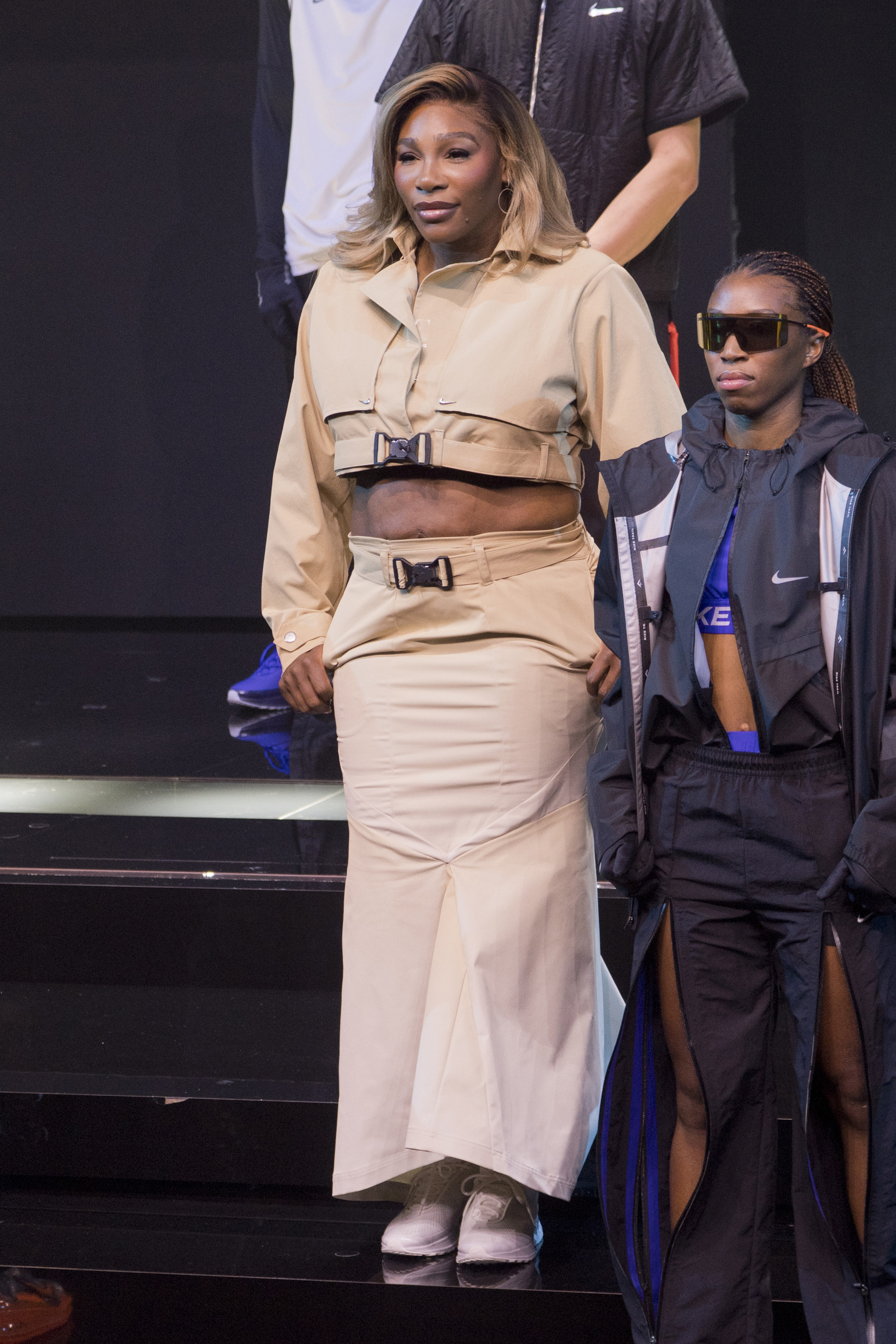 Serena Williams at the Nike Air Innovation Summit in Paris, France.
Serena Williams at the Nike Air Innovation Summit in Paris, France.
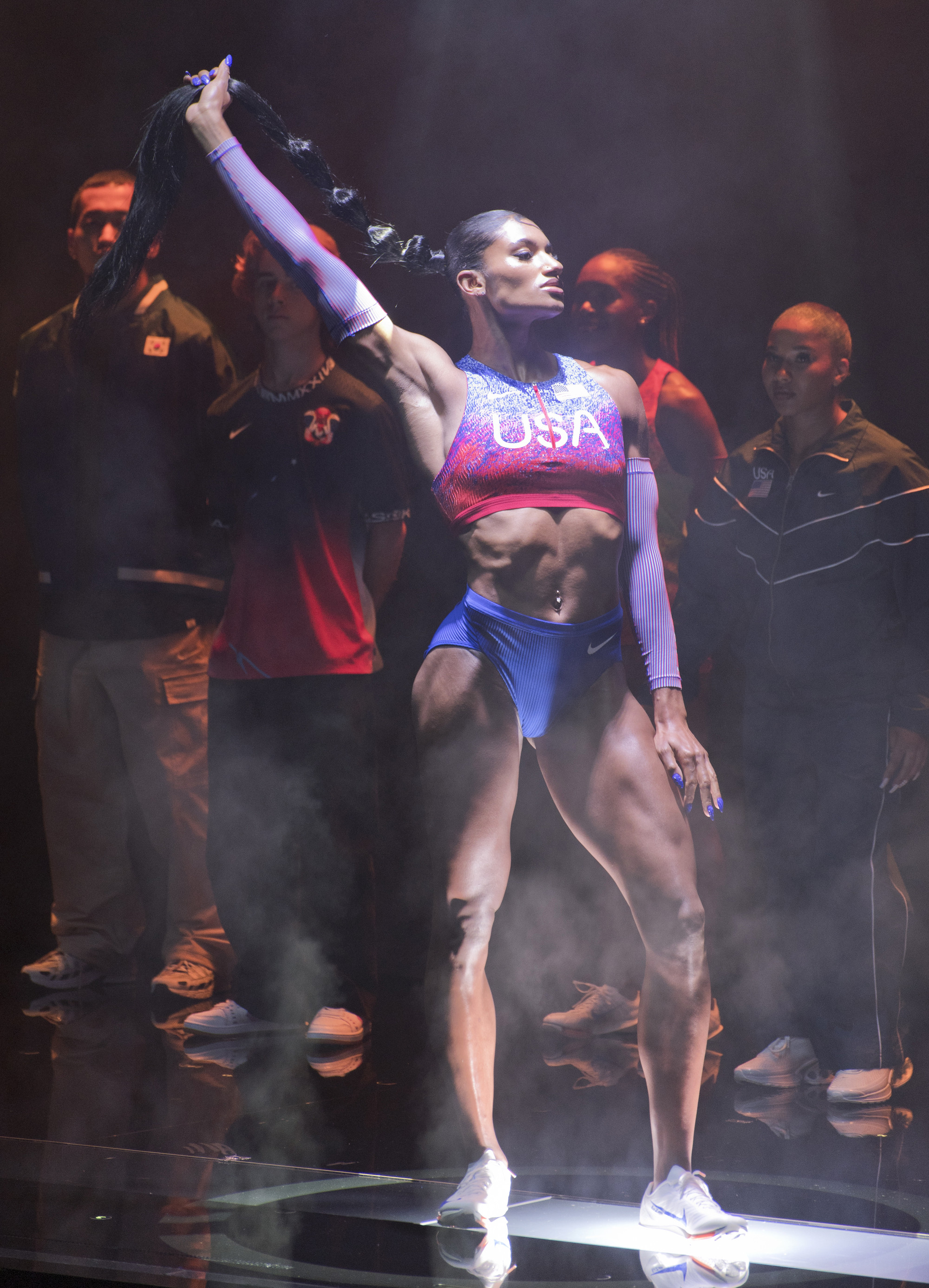 Anna Cockrell at the Nike Air Innovation Summit in Paris, France.
Anna Cockrell at the Nike Air Innovation Summit in Paris, France.
[


